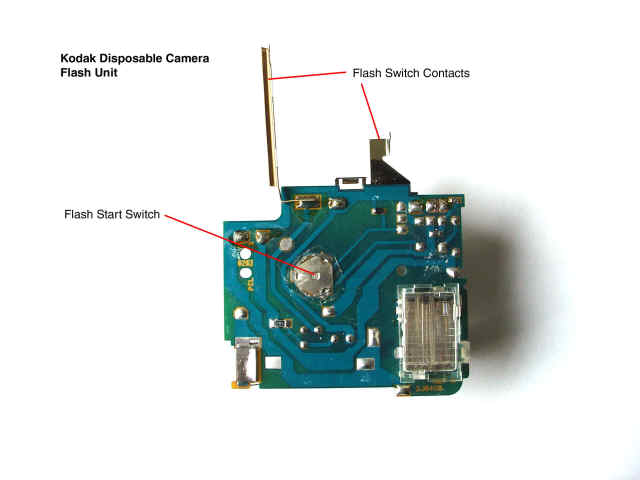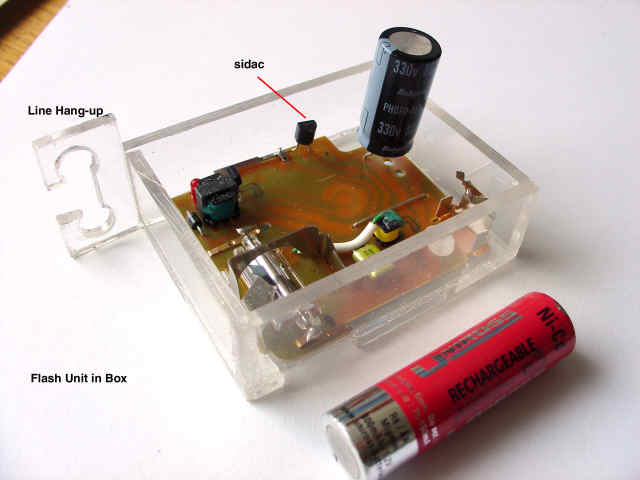

|
|
The next thing is to have the flash go off repeatedly without having to switch the thing manually. (Unless you have very, very long arms - even longer than Mr Tickle's arms). What you need is a component called a sidac. This little beauty stays open-circuit until the voltage across it reaches a certain value & then it shorts - only to return to its original open-circuit state. Now, if you put the sidac across the contacts which make the flash circuit fire, then the flash will go off repeatedly - all by itself. The sidac you need for this job is a DO-92 from RS Components. (put SIDAC into the RS website search box.) If you look at the circuit board, there is a switch which is the one you press to start the charging process. In most brands (like Kodak), this switch is a raised bubble of thin metal held in place with sticky tape. It clicks when you push on it. Take the bit of metal off and solder across the contacts - or somewhere on the circuit to do the same job. Next. Find the contacts which fire the flash - two pieces of metal sticking out from the board. It is across these two contacts that you solder the magic sidac. When you connect the battery, you will hear the circuit charging up and then&.. FLASH. The unit will continue to flash for about 30 minutes; taking longer and longer between flashes as the battery runs down. Put the board + battery in a box to give a neat unit which you can hang onto your kite. If you hang the unit on the string with the flash pointing at the kite, you achieve a particularly impressive effect - every now and then the kite appears in the dark sky. Repeat warning about the capacitor: after connecting the battery, make sure you keep your fingers away from the circuit because that discharge needs to be through the flash tube - not through you. Go to http://members.misty.com/don/kmaxhack.html to get some more details. A picture is worth a thousand words. There are a couple on the WHKF website which should make things clear. Do have a go. 

|

| 
|